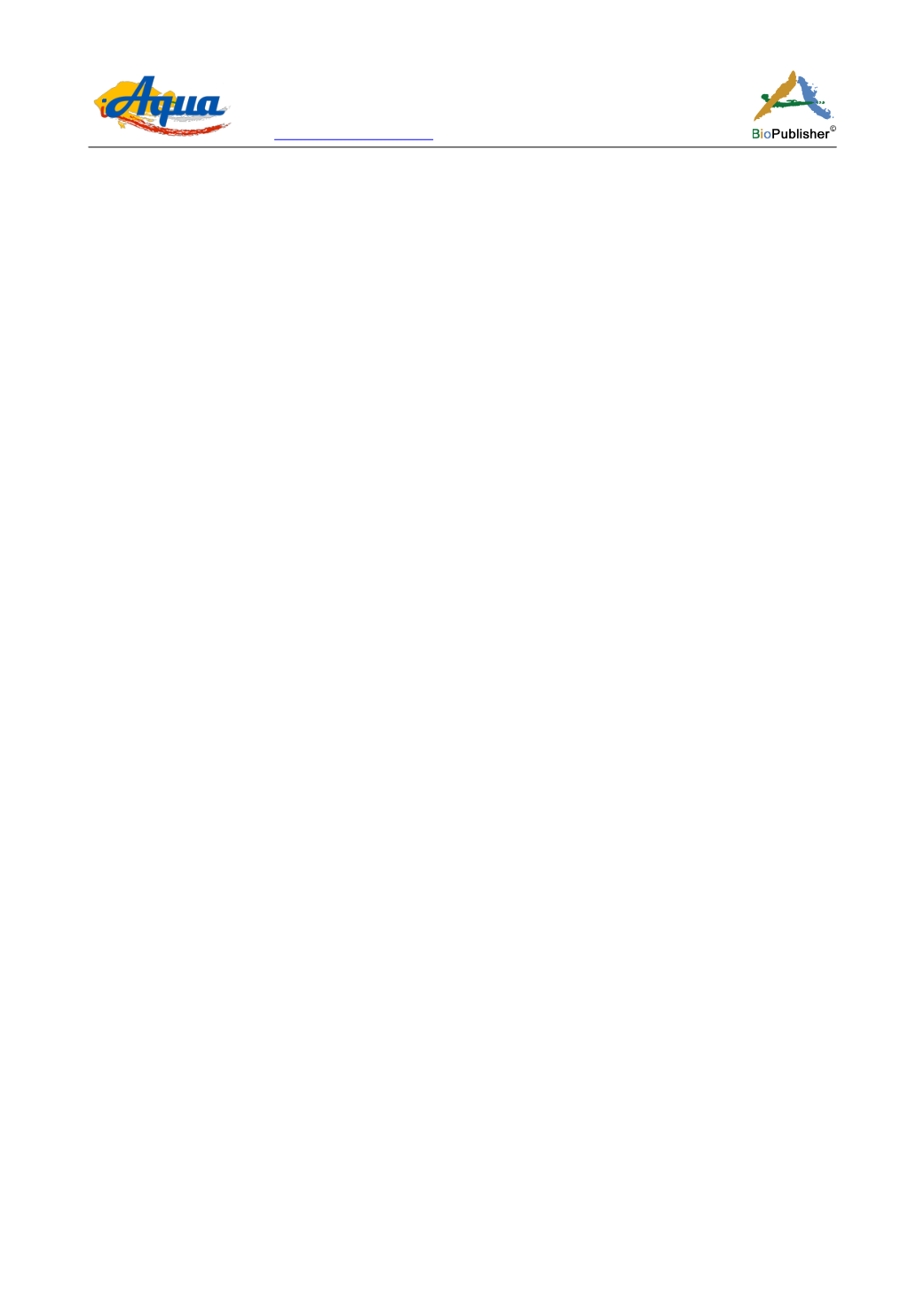
International Journal of Aquaculture, 2016, Vol.6, No.19, 1
-
8
5
for scallop culture using multi-criteria evaluation known as weighted linear combination. The results indicated
that a large portion (56%) of the area under consideration was suitable for scallop aquaculture.
Hossain et al., (2008), knowing the essence of site selection in aquaculture conducted a study to identify suitable
sites for carp farming development in urban water bodies (UWBs) of Chittagong, Bangladesh using Geographical
Information Systems (GIS) based Multi Criteria Evaluation (MCE) of water, soil and infrastructure database.
ASTER imagery and 14 thematic layers were analyzed with ENVI and GIS capabilities, and developed a series of
GIS models to identify and prioritize the appropriate UWBs for carp farming. Hossain et al., (2008) reported that
487 UBWs occupied an area of 362ha. Out of this 77% being 280ha were deemed most suitable with 10% and
13% being deemed as moderately suitable and not suitable respectively.
2.3 Planning of aquaculture
Planning of aquaculture development and analysis of consequences arising from development decisions before
their application in the land scape could be predicted using remote sensing and GIS (Burrough, 1986;
Aguilar-Manjarrez and Ross, 1995a; Hossain and Das, 2010).
Maps that have been generated over the years can be updated through the use of satellite remote sensing. Also
remote sensing and GIS could be used to generate new maps for planning aquaculture as previously employed by
Vibulsresth et al. (1993), Venkataratnam et al. (1997), Peˇ ırez et al. (2003), Giap et al. (2005), and Rajitha et al.
(2007).
Some studies in the past years have focused on the use of remote sensing and GIS in mapping and monitoring of
aquaculture (Nath et al., 2000; Dahdouh-Guebas et al., 2002; Salam et al., 2003; Dwivedi and Kandrika, 2004;
Jayanthi et al., 2006; Seto and Fragkias, 2007). Remotely sensed imagery is appropriate for revealing the effects
of aquaculture on the environment to various levels. Knowing the effects of aquaculture activities have on the
environment, Dwivedi and Kandrika (2004) used a section of coastal Andhra Pradesh in India as a case study area
in assessing the feasibility of generating aquacultural information to aid in the planning and monitoring of its
activities. This study under review used merged information from PAN data, Landsat TM, SPOT- MLA and
IRS-IC/-ID-LIS-III to detect information from individual ponds. This data indicated that between 1986 and 2001,
aquaculture had grown tremendously in the area under study.
3 Factors affecting choice of satellite data
A large number of earth observation satellites has orbited, and is orbiting our planet to provide frequent imagery
of its surface (Rajitha et al., 2007). Selecting satellite data could influence the results obtained during a study. It is
therefore prudent that the right data be selected for the right study. This section looks at some of the factors that
influence satellite data selection. The selection of the right satellite data is dependent on several factors. These
include the essence of the study or investigation, the time frame to for the study, the funds available as well as the
technical known how of personnel available for the study.
4 Opportunities and Constrains to the use of remote sensing and GIS in aquaculture
Using remote sensing and GIS in aquaculture presents a lot of opportunities which could be a fertile ground for
the development of aquaculture. Site selection, mapping, planning, monitoring and evaluation of the effects of
aquaculture on the environment can be investigated in different ways including direct field observation and remote
sensing. Comparatively, remote sensing technique of is much more cost-effective that field methods. The use of
remote sensing is a time efficient method in which large a vast area could be monitored using a single image. Also,
using GIS and remote sensing technology help in defining geographic framework, specifying environmental
constraints and identifying resource limitations (Stead et al., 2002) hence using GIS and remote sensing
technology can reduce the amount of field sampling and increases the spatial and temporal coverage of estimation
(Radiarta et al., 2008). Again, there are lots of space-borne multispectral optical sensors that are useful and could
be employed in aquaculture for site selection, mapping and evaluation. These space-borne multispectral optical
sensors include; Landsat Thematic Mapper (TM), Landsat Enhanced Thematic Mapper Plus (ETMþ), Landsat


